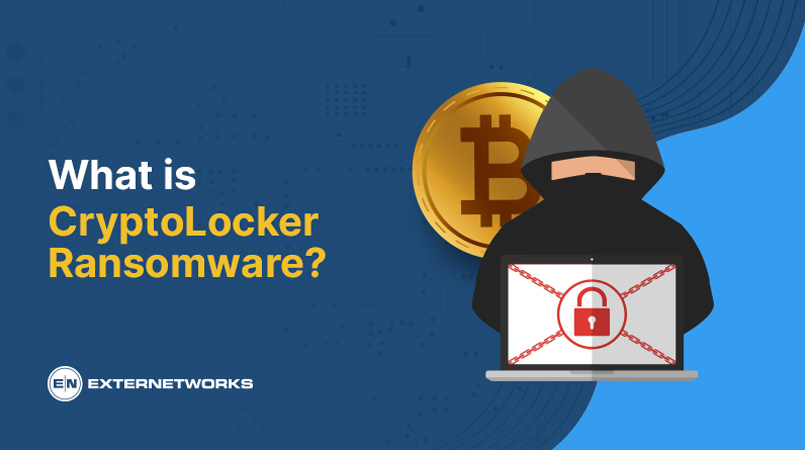CryptoLocker ransomware is spreading quickly across the internet. It is a new type of malware that encrypts files on your computer and demands payment to unlock them. Lock your files and won’t let you access them until you pay a ransom.
Once it infects your machine, it will lock down every file on your PC and demand $300 worth of Bitcoin to decrypt them. There is no known way to recover encrypted files once this virus has locked them.
Read on to learn what is CryptoLocker Ransomware attack and How to Protect Against It?
CryptoLocker was first discovered in December 2013 and has since infected millions of computers worldwide. Cryptolocker has become one of the most common forms of malware used by cyber criminals. There are many malware variants, but they all share similar characteristics. They are usually distributed through spam emails containing malicious attachments or links. Once opened, the malware will install itself onto the user’s machine without permission. It locks users out of their machines by displaying a warning screen and demanding money to unlock them. If the user doesn’t pay, they lose access to all their files.
Cryptolocker uses a combination of techniques to encrypt files on computers and then demand a ransom payment to exchange the decryption key. It starts by taking screenshots of all running processes, including Microsoft Word and Excel. Then it searches for common file extensions. Next, it creates a new file called “cryptovirus.txt” and adds random characters to each line. Finally, it replaces the original attachment with this new one. This makes it challenging to identify the original file type because the filename looks different from any other file.
Once installed on a PC, CryptoLocker will scan the victim’s local network looking for vulnerable computers. If it finds one, it will lock the user out of their machine by displaying a warning screen and demanding money from them. It will also show messages telling people they should not contact the FBI if they want to recover their files.
Once a computer has become infested with CryptoLocker, it becomes almost impossible for the user to remove it without paying a ransom.
As soon as a computer becomes infested by CryptoLocker, its removal becomes a difficult job because the virus locates and encrypts any file stored in shared network drives, USB drives, external hard drives, network file shares, and cloud storage drives for files.

Yes, it remains one of the most common types of malware used today. It has become increasingly difficult to remove because it uses a new encryption process, making it harder for security software companies to develop tools to combat it.
There are several ways to prevent this ransomware infection from infecting your device. First, it’s important to back up your data regularly. Second, avoid clicking links in emails and downloading software from unknown sources. Lastly, keep your operating system updated so that any new threats can be detected and removed.
If you don’t want to pay the ransom, you’ll need to remove the malware from your system before it can encrypt any files. There are several ways to do this, depending on your operating system. For Windows users, we recommend using Malwarebytes Anti software, which has a free trial available. Mac users should download the accessible version of Malwarebytes.
If you suspect you may have fallen victim to this virus, it’s important to take steps to remove it from your system. There are several ways to detect if CryptoLocker has infected you. First, check for suspicious emails or messages asking you to click links in email or download attachments. Second, look at the file extensions associated with the encrypted files using asymmetric encryption. Third, check your browser history for any websites where you downloaded files. Fourth, search your computer for any files that contain “CryptoLocker” or “cryptolocker” in their name. Finally, scan your computer for malware using anti-malware software.
If you receive a suspicious email from someone claiming to access your personal information, it might be best to ignore it. Never click on any links or attachments provided by the sender. Instead, contact the company directly through its website or social media channels.
Yes, but only if you have the decryption key. This key is usually hidden somewhere on the infected machine, so you’ll need access to the device itself. If you don’t have this key, you won’t be able to recover any of your data.
There are several ways to stop Cryptolocker from locking your files. First, if you’ve already paid the ransom, contact the cybercriminals directly. They may not respond, but it’s worth a try. Second, you can remove all traces of Cryptolocker by deleting the infected files and folders. Third, you can install antivirus software to scan any new files before they are opened. Fourth, you can back up your files regularly so don’t lose them if something goes wrong. Finally, you can take steps to prevent this type of attack in the future. This includes making sure your operating system is updated, backing up essential files frequently, and keeping your anti-virus software current.
In conclusion, CryptoLocker is one of the most dangerous viruses today. It locks your files and then demands money to get them back. This article was written to help educate readers about the dangers of ransomware. We hope it helps you avoid falling victim to these types of attacks in the future.
